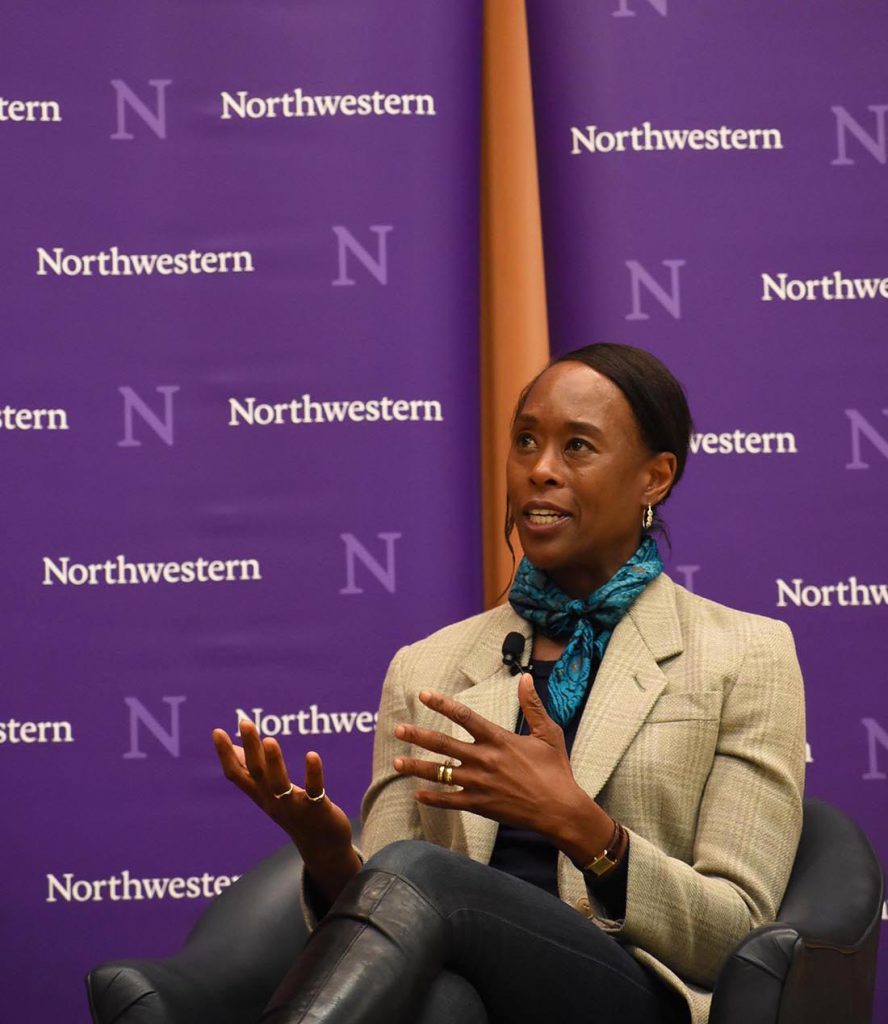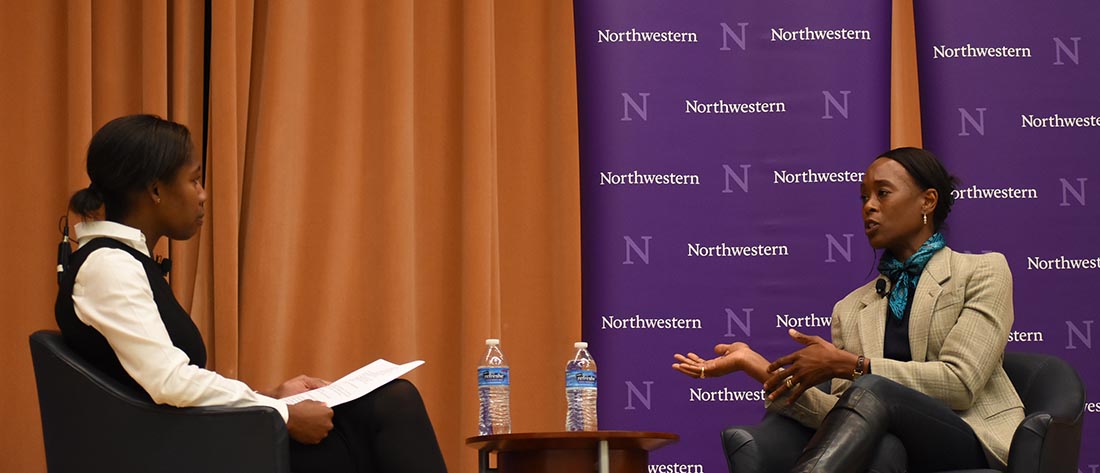By Anne Snabes
Medill Reports
The pioneering African American women engineers and mathematicians who helped land Neil Armstrong on the moon also maintained a strong family life outside of work and some played bridge and music, according to author Margot Lee Shetterly.
“They were very passionate about their hobbies and their families, as passionate as they were about their work,” Shetterly told a packed audience at Northwestern University’s Evanston campus Thursday evening.
Three of these women — Katherine Johnson, Dorothy Vaughan and Mary Jackson — are the focus of “Hidden Figures,” Shetterly’s book that was adapted into an Academy Award-nominated movie. The book is about the women at NASA who were called “computers,” because they made the calculations that modern-day computers make, guided instead by their own prowess and simple adding machines.
Shetterly talked to the Northwestern community about her own story growing up in the city in Virginia where NASA’s first field center was located after the space agency was created in 1958. She explained what life was like for women who worked at this facility. She said there are more opportunities for women of color in computer science and engineering now, but some still feel isolated as they are the only women of color in their work spaces.

Shetterly grew up in Hampton, Virginia, where her father was an atmospheric scientist at NASA’s Langley Research Center. He worked in the same center as the women, but was a generation younger than them. Shetterly said his career was supported by the work these women did in the late 1950s and early 1960s.
She told the Medill News Service and other reporters that “Hidden Figures” was “sort of an investigation into my story and my place in American history.”
According to Shetterly, the women “computers” at NASA produced work similar to what an Excel spreadsheet provides with automatic calculations today. She said they applied certain operations to values to obtain their results, capturing data from wind tunnels and airplanes. They then had to determine what this information meant for space exploration.
When a woman moved to a higher up position, she could start designing experiments. Originally, the engineers and mathematicians studied helicopters, airplanes and other planes. Once the Space Age started, though, they worked on Project Mercury. This project allowed Alan Shepard to complete a suborbital flight in 1961 and then sent John Glenn to orbit the Earth in 1962.
“The challenge became not, ‘How are we going to get Plane A from Point B to Point C?”, but how are we going to shoot him into space, orbit him around the Earth and bring him back to Earth safely?” Shetterly told the Medill News Service.
Katherine Johnson calculated the first flight trajectories for the Mercury mission and others. She also worked on the Apollo 11 moon landing that allowed Neil Armstrong to walk on the moon in July 1969.
In addition to working, some of women engineers and mathematicians at NASA were mothers. They also had hobbies, such as playing music or bridge. According to Shetterly, Johnson and her friends attended the Central Intercollegiate Athletic Association basketball tournament each year.
“They were huge basketball fans,” Shetterly said.
She meets women of color in computer science and engineering at events. She said she can’t believe how much things have changed and how much more opportunity there is.
“And yet, in the conversations I have with these individual women, there’s a sense of being the only one, of being isolated,” she said.
The African American women in her book worked together as “computers” at NASA.
“While there is more opportunity now … there is less of that sense of cohesion as well and a greater sense of isolation,” she explained.
Sarah Peko-Spicer, a graduate student in statistics at Northwestern who attended the talk, said that learning the histories of people you know can lead to “such a thorough and comprehensive book.” She added that listening to Shetterly talk made her consider digging through her grandfather’s memorabilia from World War II and seeing what she could learn.
“The people that you’re growing up around can have such complex and important and fascinating histories,” she said.

